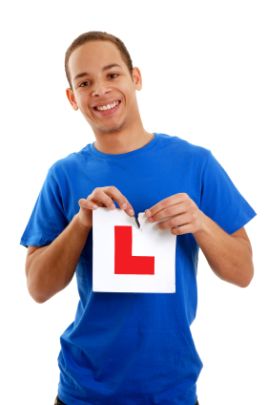Driving Theory
Practice makes perfect. It is a known fact that if you practice a particular skill, you get better at it. This is true of mental skills such as performing mental arithmetic: the more you try to do sums and maths in your head, the better you get at it.
Similarly, driving is a skill. The more you practice your driving the better you get, as your experience, confidence and familiarity with the artform increase. At the start, there is a lot to learn as you get behind the wheel for the first time and it can be daunting.
Whilst you are having your practical lessons, hand in hand you will be learning driving theory. Specifically, you will be preparing for a driving theory test that will see if you have a grasp of all the important elements you need to know to be a safe driver in practice. Driving theory is important as new drivers are more likely to be involved in accidents than experienced driver, so a good command and understand of driving theory will help to keep you safe.
There are a large range of categories that you need to know about under the umbrella term of driving theory: Accidents, alertness, attitude, documents, hazard awardness, motorway rules, other types of vehicle, road and traffi signs, rules of the road, safety and your vehicles, safety margins, vehicle handling, vehicle loading, vulnerable road users.
Those are the categories that you will be tested on. There are a range of categories. You will find it helpful as a first port of call to read through the Highway Code. This covers in detail much of the background that forms the context of driving theory. In terms of the questions you will be asked, you can access all of them for car drivers on this site, so please do register. Good luck with your driving theory - try not to be too daunted and take things at your own pace and you will be fine!
Related Articles...
When to expect your licence
The answer to this question depends on whether you have a licence issued after March 2004 or not, which was a photocard driving licence. If so, then you h'll have the option to get it...
Nervous Driver Tips
Many people who learn to drive have a combination of nerves and excitement. Even if someone says they have no nerves and are perfectly confident when it comes to driving, the first time you get...
Before Learning to Drive
The minimum age at which you are allowed to learn to drive a car on public roads is 17. As you probably know, you are not allowed to drive legally on your own until you pass your test. This means...
Motorway Driving Tips
Driving on a motorway for the first time can be both exciting and a little daunting - exciting as it is something new whilst daunting as you won't have experienced driving on a motorway before...
Testing your driving ability
The driving part of the test to assess if you are safe to let on the roads is called the practical test, and it lasts in the region of 40 minutes in total. The purpose is to assess if you can drive...
Road Tax Disc Explained
You might hear to this referred as to something called excise licence, but in common parlance (speech!) this is called road tax.
And you will have a circular piece of paper that comes to show...
Practical Driving Test
There is an online booking system available for a practical driving test which you can access from the DirectGov website.
The web address to do this is: ...
Rules regarding the use of seat belts
When it comes to seat belts, you should be certain of what the rules are with regard to seat belt usage, and your responsibilities as the driver in terms of other passengers in your vehicle and...
What to do in an accident situation
If you do have an accident, then you must stop. Whilst you may read about people driving away from the scene of an accident, you should always stop and face up to any responsibilities involving...
Oil in your car and oil pressure
Oil is not something that you might think is essential to the operation of a car, but infact it is. Oil acts as a lubricant for the moving parts such as the moving parts of the engine, and it is...
Back to home page of driving theory test questions

